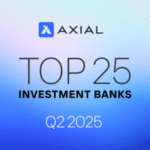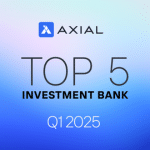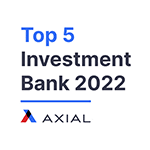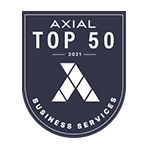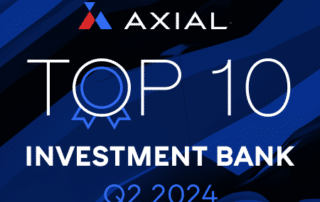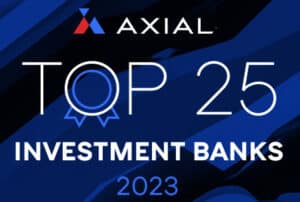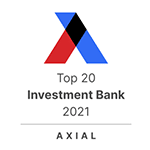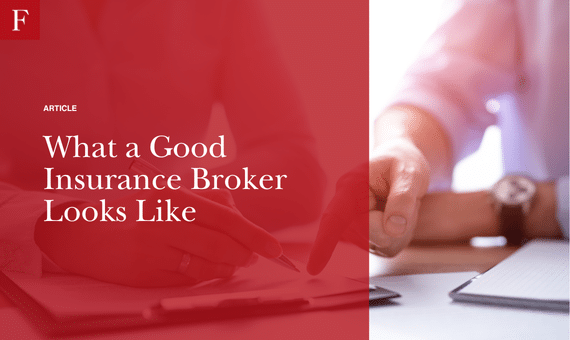
What a Good Insurance Broker Looks Like
Inside the Traits that Make Brokers Acquisition Ready
As M&A activity continues to consolidate a fragmented U.S. insurance market, the question arises: what separates an average agency from a truly valuable insurance brokerage?
From FOCUS Investment Banking’s experience in the market, certain traits consistently define high-performing, resilient firms — traits that not only command premium valuations but also position sellers for successful transitions. For agency principals considering an exit, understanding these qualities is essential to maximising enterprise value and attracting the right partner.
Insurance brokerages stand out for their reoccurring revenue models, strong cash flows, and low capital intensity — all factors that make them highly sought after by both strategic buyers and private equity platforms. And with many firms navigating succession planning, regulatory complexity, and growth constraints, today’s market presents a timely opportunity to explore a sale under favourable conditions.
From reoccurring commissions and operational efficiency to commercial lines focus and niche specialisation, the profile of a “good” broker has never been clearer. Whether building a platform or bolting on strategic capabilities, understanding these traits is key to identifying value and managing risk in today’s evolving M&A environment.
The Value of Reoccurring Revenue
At the heart of a strong brokerage is predictably, reoccurring revenue. Unlike transactional businesses, insurance brokerages benefit from annual policy renewals that generate stable cash flows. A high renewal rate—typically 85% or higher—is a hallmark of a quality agency, according to a 2024 Insurance Industry report.
These reoccurring commissions do more than provide visibility into future earnings. They also improve working capital management and justify premium valuation multiples in the M&A market. Agencies with robust client retention infrastructure, such as building strong client relationships through proactive service teams, claims advocacy, and value-added consulting, tend to outperform the market.
Resilience Through Cycles
Resilience is another core attribute of a top-tier brokerage. Good brokers demonstrate consistent performance regardless of market conditions. This typically results from a diversified book of business (by geography, industry, and carrier) and strong carrier relationships.
Firms that weather negative cycles without drastic revenue fluctuations, or that grow through both organic and inorganic means, are more attractive to private equity platforms and strategic acquirers. Notably, resilience is also culturally built through long-term client relationships, stable leadership, and a reputation for reliability.
Commercial Lines Over Personal Lines
While personal insurance (like auto and homeowners) can offer high volume, commercial insurance is generally seen as more defensible and profitable—especially by investors. Commercial policies are more complex, relationship-driven, and often embedded into business operations, making them harder to replace and less price-sensitive.
This relative inelasticity gives commercial brokers better pricing power, lower churn, and higher average account sizes. It also offers cross-sell opportunities into employee benefits, risk management consulting, and specialty coverages. As such, firms with a heavy concentration in small-to-midsize enterprises (SME) or middle market commercial accounts are increasingly prized by acquirers.
Characteristics of a High-Quality Broker
Given all of the above, what specific qualities define a best-in-class brokerage in today’s market?
- Reoccurring revenue of at least 80% of total income.
- Client retention rates of 85%+ over multiple years.
- Concentration in commercial Property & Casualty (P&C) lines, especially Business Owner’s Policy (BOP), general liability, Director’s and Officer’s (D&O) and Errors & Omissions (E&O).
- Producers with industry specialization, such as agricultural, manufacturing, cyber or professional services.
- Established carrier relationships that yield preferred pricing and access.
- Digital systems that streamline renewal, quoting, and claims processes.
- Low client concentration risk, with no single client accounting for more than 5% of revenue.
- Compliance and E&O safeguards to minimize liability exposure.
These are the markers not just of a profitable business, but of one that can scale, integrate, and sustain their advantages through transitional periods.
Integration-Ready Operations
With ongoing consolidation, many acquirers also prioritise firms that are “integration ready.” This includes clean financial reporting, up-to-date agency management systems (for example, Applied or Vertafore) and documented processes.
Firms that are overly founder-dependent—with little middle management or systems in place—may still perform well, but may also achieve lower valuations or face more post-transaction risk.
Why It Matters
As private equity acquisitions continue to drive roll-up strategies across the U.S., the traits of a good insurance broker are no longer just internal metrics—they directly influence market value and competitive position. Buyers are increasingly selective, looking for firms that can contribute meaningfully to EBITDA, geographic footprint, or sector depth.
Moreover, clients benefit from working with well-run agencies: better risk advice, faster service, and more tailored coverage.
Whether preparing for a sale, scaling up, or simply aiming for best-in-class performance, the definition of a “good” insurance broker is converging around fundamentals that prioritize stability, specialization, and client loyalty. In a consolidating industry, those qualities are both a shield and a springboard.
FOCUS Investment Banking has advised a number of financial brokers including the sale of Insight Insurance to Arachas, and the sale of OCI to Assured Partners. To discuss this article, and opportunities in the insurance industry, reach out to Eoin O’Keeffe or connect with our expert team to explore what’s possible for your business.
Download full article here.

